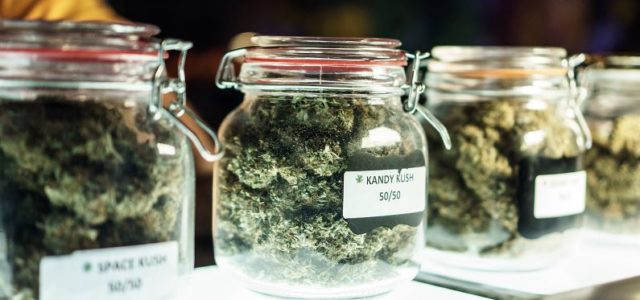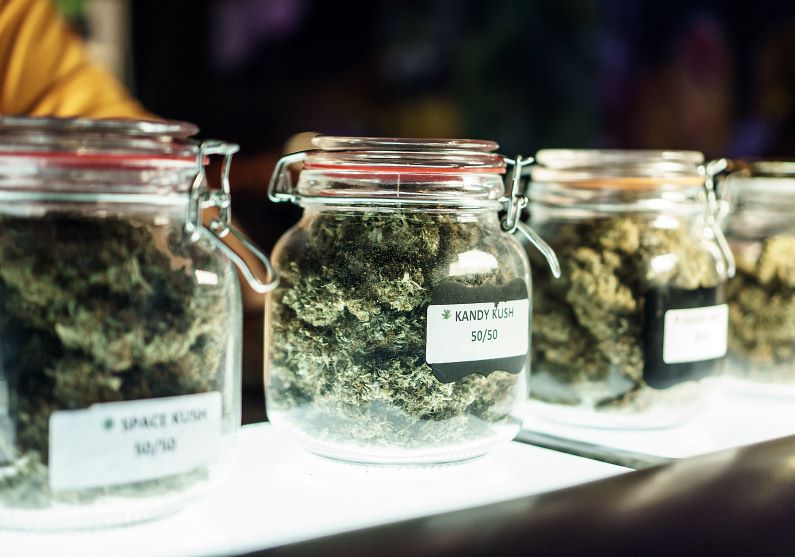Name that Strain: Connecticut’s Strange Experiment With Cannabis Names & Numbers
ConnecticutMarijuana Industry News February 9, 2023 MJ Shareholders 0


Other than the act of paying money and receiving a product in exchange, cannabis shopping in Connecticut is very, very different from anywhere else, by design. For reasons that defy comprehension, state law requires strain names to be both approved by the state and unique to the state, which means new names are created for cultivars that already have names or are the product of breeding using known names.
For example, below are a few New Arrivals to the Fine Fettle dispensary in Newington, broken out by grower:
THERAPLANT
Aniva T29 PR Minis 14962
Daybrid T86 CR 16549
RosicaPure T200C1 LX 14952
AGL
Rythm Indicol XY T31.07 17687
Hybridol NO T22.91 17690
Indicol ST T853 Rythm Vape 16889
Indicol YZ T426 Rythm Vape 16900
Hybridol LM T25.51 16999
CTPHARMA
Banavec Flower-Med T32.57% H 17884
Glaceden Shorties T32% I 17131
Obakan Flower-Med T32.51% H 17880
Saliden RE BA T92% H 17410
Tussaden Pure Vape T435 S 17886
CURALEAF
Curaleaf Whole Flower 3.5g Scarlett (S)-17513-MED
Curaleaf Whole Flower 3.5g Citron (S)-17517
Curaleaf Whole Flower 3.5g Alexandrite (I)-17516
Clearly, these names are not meant to have any objective meaning, or any meaning at all. The result is that unless one has an encyclopedic knowledge of the cannabinoid breakdown of a strain, which is listed on the label, trying to find a similar product will be a guess at best without the assistance of a brilliant budtender. Adding insult to injury, consumers will not be given the opportunity to use their nose and eyes to make an educated decision prior to purchase. As impossible as all this sounds, however, help is available in the form of Dabbin’ Dad’s CT Strain Name database, which was created by Paul Kirchberg of Milford.
CT’s Brand Registry
Connecticut’s prohibition on traditional strain names, while strange, has not limited the number of names that have been registered with the state, to say the least. At last count, 15, 930 unique strain names can be found in the state’s Medical Marijuana Brand Registry, which was created in September 2018.
Connecticut law requires that strain “names cannot be identical to or confusingly similar to any existing non-cannabis product, cannot appeal to children, and cannot be obscene or indecent,” Kaitlyn Krasselt, spokesperson for the Connecticut Department of Consumer Protection, told CT Insider. The article noted that Kirchberg’s Dabbin’ Dad database lists 630 cultivars along with their Connecticut kin.
“I do track them as far back as when the state medical program was still using numeric values,” he said of the laborious task. “When the medical program first started, you weren’t even buying ‘Sour Diesel’ or ‘Sativarin X.’ You were buying ‘1515075.’ That’s what you’re buying.”
Kirchberg, who was a medical cannabis patient long before Connecticut legalized it for medical use, acknowledged that most people find the new names silly, and that the rules were created that way because “politicians at that time thought there was no value in street names, that people would essentially learn over time,” but he also noted the real-world complications they created that continue to this day.
“As a medical patient, I want to know what I’m consuming,” he told CT Insider. “I want to have a conversation with other people about it, or even to my doctor, and I really can’t do that because now the state has broken that communication and that educational connection.”
Of course, if one’s experience with cannabis is limited to Connecticut or other medical-only states, the state’s protocols might seem normal, especially for patients used to medical packaging and labeling. And Connecticut did just rank in the top five states for its medical cannabis program by Americans for Safe Access in its recent 2022 State of States report. But anyone with weed miles under their belt will likely be alienated by Connecticut’s legal adult-use experience, and one wonders how any semblance of brand loyalty can be achieved in a state that apparently wants to discourage traditional cannabis branding.
The state also isolates itself from its neighbors. Just across the border, in Massachusetts, one can still converse with a budtender about the differences between the strains they carry and similar variants from another state, but in Connecticut, because the similar genetic is stamped with a name with no breeding or historic significance, an already confusing marketplace of strain names has been taken to a nihilistic extreme that could weaken growth and diversity of product in the state’s nascent adult-use market.
To be fair, with only four cultivators currently serving the market, true diversity in Connecticut is by definition not yet possible. It’s pipeline may be further tested if one of its cultivation licensees, Theraplant (Greenrose Holding Company), is unable to continue supplying the state, as was recently reported. As it is, one only has to look at most menus of any of the ten hybrid (medical/adult-use) dispensaries currently serving the public to see the lack of diversity, not to mention the strange names. I have been assured the current situation will not last, and that is surely so, but as it stands, Connecticut, by keeping the consumer/patient as far away from the actual plant as possible until the sale is final, and to the sure consternation of retailers, seems determined to make the cannabis experience a bland and brandless affair.
While there may be no connection and acknowledging that Missouri has twice the population of Connecticut, it is interesting to note that the first week of sales in Connecticut resulted in $2 million in adult-use sales, while the opening weekend in Missouri brought in $8.5 million in adult-use sales.
MJ Shareholders
MJShareholders.com is the largest dedicated financial network and leading corporate communications firm serving the legal cannabis industry. Our network aims to connect public marijuana companies with these focused cannabis audiences across the US and Canada that are critical for growth: Short and long term cannabis investors Active funding sources Mainstream media Business leaders Cannabis consumers
Australia Cannabis Q&A
Uncategorized Mar 26, 2025










No comments so far.
Be first to leave comment below.